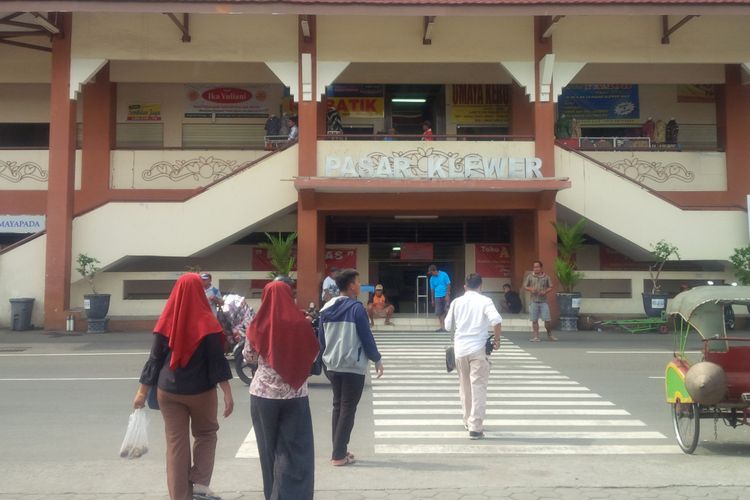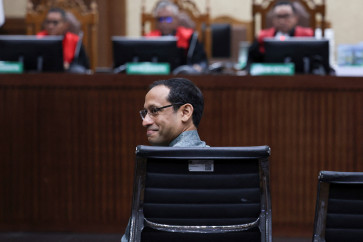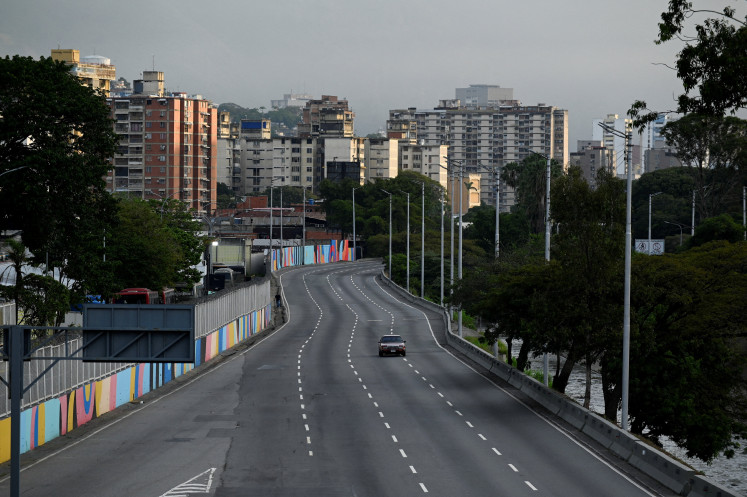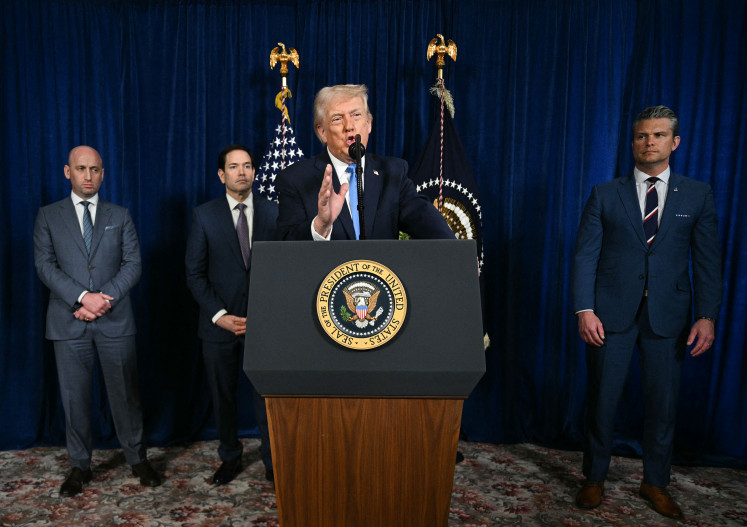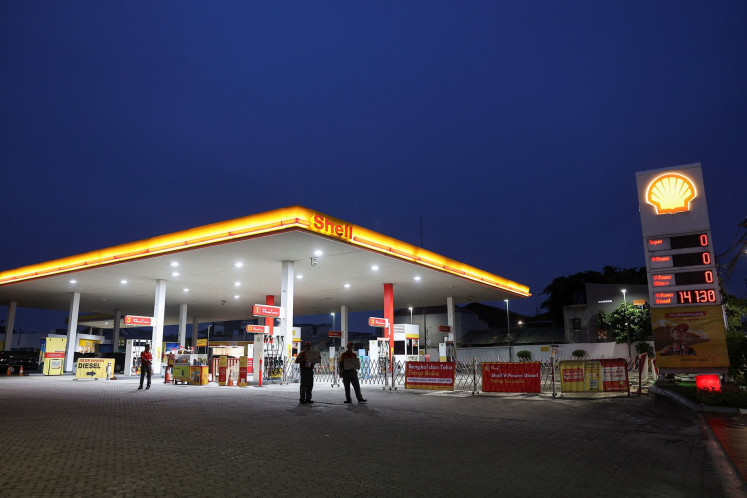Popular Reads
Top Results
Can't find what you're looking for?
View all search resultsPopular Reads
Top Results
Can't find what you're looking for?
View all search resultsWhen in Surakarta, make your way to these five traditional markets
Planning your next trip to this city? Here are some traditional markets that you can visit while exploring the corners of Surakarta.
Change text size
Gift Premium Articles
to Anyone
S
urakarta, Central Java, is one of the cities in Indonesia where one should make time to visit at least one traditional market.
Amid urban development, Surakarta's traditional markets survive and still thrive as a tourist destination, historical conservation area, art and cultural spaces and community activity rooms.
Planning your next trip to this city? Here are some traditional markets that you can visit while exploring the corners of Surakarta.
Klewer Market
Located strategically between the Kasunanan Surakarta Palace and Surakarta Grand Mosque, Klewer Market has been a shopping center since the 1940s. It has continued to draw crowds for several decades, turning it into the biggest center of textile products in Central Java.
Batik is the main commodity traded in Klewer Market, where three choices of products are available: handmade batik, printed batik and textiles with batik motifs.
Kauman village located across the market is a production hub for batik that is also worth visiting as tourists can have a look at the batik-making process.
Klewer Market is also known for its legendary dishes, namely tengkleng. Described as lamb meat cooked together with the bones, the market's tengkleng stall is always crowded with food enthusiasts who even need to take a waiting number to get their turn to enjoy the traditional serving.
Alun-Alun Utara handicraft market
A man spends his time at a used book and magazine stall at Alun-Alun Utara handicraft market. (JP/Stefanus Ajie)This handicraft market is located close to Klewer Market, along the west and east sides of the Kasunanan Surakarta Palace’s Alun-Alun Utara town square.
The west part of the market sells various batik products, accessories and used books. Meanwhile, the east part boasts stone jewelry, eyeglasses and krisses.
The handicraft market became a souvenir center and a parking lot thanks to its spacious and strategic location. From here, visitors can easily reach other destinations, such as the Vastenburg Fortress, Kasunanan Surakarta Palace compound, the city’s Ground Zero area, Kauman batik village, Klewer Market, as well as modern shopping centers Beteng Trade Center (BTC) and Solo Wholesale Center (PGS).
The area becomes more crowded with traders during special occasions, such as the Sekaten ritual to celebrate the birth of Prophet Muhammad, which is centered at the Surakarta Grand Mosque area.
Pasar Gede
Pasar Gede (Grand Market) Hardjonagoro is a historical building from the era of Sri Susuhunan Pakubuwono X of the Kasunanan Surakarta Palace, built in 1927 by Dutch architect Thomas Karsten.
The market is located on Jl. Urip Sumoharjo in Sudiroprajan on the banks of the Pepe River, which during the development of Pasar Gede was still a trade route from the Bengawan Solo River.
Apart from selling foodstuffs as its main commodities, Pasar Gede is also known as a culinary center for various Surakarta traditional cooking. Timlo and soto (soup) are the main menus of Pasar Gede. The accompanying menus and snacks include dawet (traditional beverage made of small rice cakes served with a mixture of coconut milk and sugar), gethuk lenjongan (different varieties of traditional cakes made of cassava and tubers), brambang asem (side dish made of cassava leaves with spicy-sweet dressing), cakwe (salty fried cake made of flour) and tahok (beverage made of bean curd).
Pasar Gede also functions as an art and cultural space, annually holding Grebeg Sudiro to celebrate Imlek (Chinese New Year), which is presented by mixing Javanese and Chinese cultures.
During the anniversary celebration of Pasar Gede, traders can also be found organizing thanksgiving rituals and presenting traditional art performances as a way of expressing gratitude.
Read also: Strolling through the ages in Surakarta
Triwindu Market
A food seller at Triwindu Market. (JP/Stefanus Ajie)Triwindu Market is located right across the Mangkunegaran Palace, particularly on Jl. Diponegara, Keprabon. The market was built in 1936 during the ruling of KGPAA Mangkunegara VII. It sells art objects, antiques and reproduced antiques.
Exploring the corridors of Triwindu Market is like walking along the hallway of a museum, with various collections ranging from unique antiques like Chinese ceramics, gramophones, coffee grinders, ancient radio units and vintage kitchen wares. The market also sells various traditional handicraft products such as Panji masks, puppets, glass paintings and Loro Blonyo statues.
Triwindu Market is also known for its traditional culinary offerings, such as soto (aromatic soup) Triwindu, whose eatery has been around since 1939. Other special dishes includes es puter (ice cream with coconut and fermented sticky rice flavors) and sate kere (sate made of cow innards served with spicy peanut sauce) that can be found in Plaza Ngarsopura, the area in front of Triwindu Market.
Kabangan Market
An artisan at Kabangan Market turns used drums into home appliances. (JP/Stefanus Ajie)Kabangan Market is located on Jl. Rajiman, Sondakan, not far from the Laweyan batik village. The market is the only one that sells various recycled products for relatively low prices, starting from Rp 20,000 (US$1.42) for cooking appliances to hundreds of thousands of rupiah for larger goods, such as water tanks or mosque domes.
Every day, trucks send in used drums from several factories outside Surakarta to Kabangan Market. Inside the market, artisans can be seen cleaning the used drums, cutting them into small pieces to be assembled in such a way to produce various home appliances, such as garbage bins, stoves, chairs, kettles, water tanks and other goods made of recycled waste. (yun/kes)



